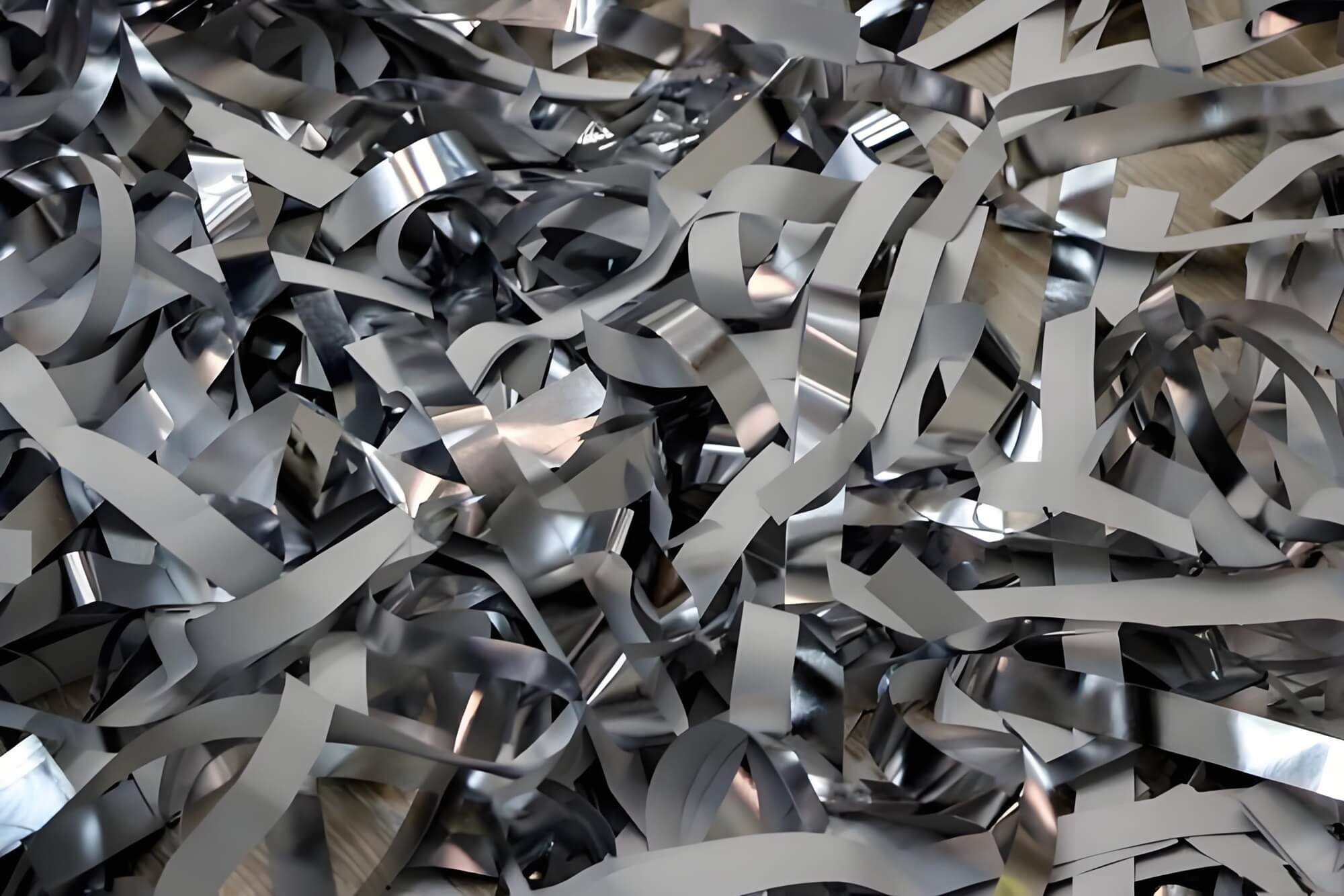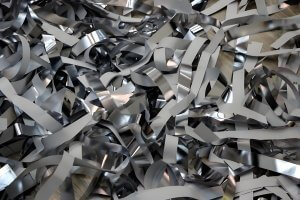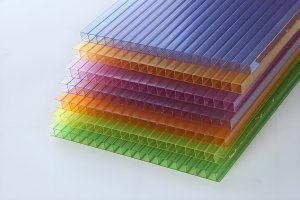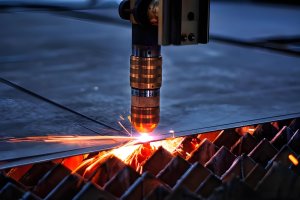Introduction: The Pivotal Role of Ductility in CNC Machining
In CNC machining, ductility is a defining material property that shapes every aspect of the process, from tool selection to final part quality. As a machinist with over a decade of experience, I’ve seen how ductility—a material’s ability to deform plastically under tensile stress—can make or break a project. Highly ductile metals like aluminum and copper often pose greater challenges than brittle ones due to their tendency to stretch and stick during cutting. This guide explores the science of ductility, its impact on CNC machining outcomes, and proven strategies to master it, drawing from my shop-floor insights to bridge material science with practical application.
Understanding Ductility: The Foundation of Material Behavior
To excel in CNC machining, understanding ductility is essential. It’s the key to predicting how materials behave under the intense forces of a spinning tool, allowing machinists to make informed decisions.
What is Ductility and How is it Measured?
Ductility refers to a material’s capacity to stretch significantly before fracturing, a trait rooted in metallic bonds that let atomic layers slide smoothly. Early in my career, I was fascinated by how aluminum could be drawn into thin wires without snapping—a clear sign of high ductility. We quantify this property through tensile tests, measuring:
- Percentage Elongation at Break: The extent a material stretches before breaking.
- Reduction of Area (RA): The “necking” at the fracture point.
These metrics help anticipate machining challenges. For example, I once tackled a copper project where high ductility led to stringy chips that jammed my lathe, a lesson that shaped my approach to tool setup.
Factors Shaping Ductility
Ductility varies with crystal structure, temperature, and composition. Face-Centered Cubic (FCC) metals like aluminum are naturally ductile, while low temperatures can make materials brittle. Alloying elements and grain size also influence ductility—impurities often reduce it. Unlike malleability (deformation under compression, like rolling gold into sheets), ductility involves tensile stress. Hardness opposes ductility, resisting indentation, while toughness blends strength and ductility to absorb energy. In my experience, tough, ductile materials like low-carbon steel resist clean shearing, complicating CNC machining processes.Table 1: Mechanical Properties Compared
| Property | Definition | Stress Type | Example |
| Ductility | Deformation under tensile stress without fracture | Tensile | Copper wire |
| Malleability | Deformation under compressive stress | Compressive | Gold leaf |
| Toughness | Energy absorption before fracture | Impact | Mild Steel |
| Hardness | Resistance to surface indentation | Surface Penetration | Hardened Steel |
| Brittleness | Fracture with minimal deformation | Tensile/Impact | Ceramics |
How Ductility Impacts CNC Machining Performance
Ductility profoundly affects CNC machining outcomes, from chip formation to tool longevity, presenting challenges that demand tailored solutions.
Chip Formation Challenges
In CNC machining, ductility dictates chip behavior. Ductile materials like aluminum form long, stringy chips that can wrap around tools, a problem I’ve dubbed “spaghetti chaos” after hours spent untangling messes in my shop. These continuous chips, while signaling a smooth cut, risk “bird-nesting,” damaging parts and creating safety hazards. Brittle materials like cast iron produce short, crumbly chips, easier to manage. A persistent issue with ductility is the Built-Up Edge (BUE), where material sticks to the tool under heat and pressure. I recall a stainless steel job where BUE ruined a costly carbide tool, underscoring the need for proper coolant strategies.
Surface Quality, Tool Wear, and Precision
Ductility can yield mirror-like finishes if managed well but often leads to burrs as material deforms instead of shearing. I’ve seen ductile aluminum parts require extensive deburring, eating into production time. Surprisingly, ductile materials accelerate tool wear—long chips cause crater wear, and BUE cycles chip the tool edge. Work hardening, where the machined surface becomes tougher than the bulk material, is another challenge. On a titanium project, I noticed increasing tool resistance due to work hardening, which threw off tolerances. These issues highlight why ductility requires precision in CNC machining setups.Table 2: Chip Characteristics in Ductile vs. Brittle Materials
| Characteristic | Ductile Materials (e.g., Aluminum) | Brittle Materials (e.g., Cast Iron) |
| Deformation | Plastic Flow | Fracture |
| Chip Form | Long, continuous | Short, discontinuous |
| Chip Control | Difficult; needs chip breakers | Easy; naturally manageable |
| Common Issues | BUE, bird-nesting, burrs | Tool chipping, vibration |
| Surface Finish | Excellent (if controlled) | Fair to Poor |
Optimizing CNC Machining for Ductile Materials
Mastering ductility in CNC machining requires a strategic blend of science and practical know-how, honed through years of trial and error.
Fine-Tuning Cutting Parameters
Balancing ductility’s effects starts with cutting parameters. High speeds suit aluminum to minimize heat, while superalloys demand slower speeds to reduce tool wear. Robust feed rates ensure shearing, not rubbing, which triggers work hardening. I learned this lesson on a low-carbon steel job where low feeds caused a gummy surface, forcing a costly rework. Deep depths of cut bypass hardened layers, and high-pressure coolant clears chips and reduces BUE. High-efficiency milling (HEM), with low radial and high axial engagement, has become my go-to for keeping heat low and extending tool life in CNC machining.
Innovative Machining Techniques
Advanced techniques can leverage ductility effectively. Hot machining, which preheats the workpiece, enhances ductility to ease cutting of tough alloys like Inconel. I used this approach on a nickel alloy part, slashing cutting forces. Ductile-regime machining, using ultra-fine cuts, transforms brittle materials like glass into ductile ones for mirror finishes—a method I’ve applied to optical components with stunning results. These techniques show how understanding ductility unlocks creative solutions in CNC machining.Table 3: Recommended Parameters for Ductile Materials
| Material | Cutting Speed (SFM) | Feed Rate (IPT) | Coolant Strategy | Key Challenge |
| Aluminum 6061 | 300–800 | 0.004–0.010 | High-Pressure Flood/MQL | BUE, Chip Evacuation |
| Stainless Steel 304 | 80–150 | 0.002–0.006 | High-Pressure Flood | Work Hardening, Heat |
| Low-Carbon Steel | 300–400 | 0.005–0.015 | Flood Coolant | Gummy BUE, Burrs |
| Copper C110 | 200–400 | 0.002–0.006 | Flood Coolant (Water-Soluble) | Heat, Galling |
| Titanium Grade 5 | 60–120 | 0.001–0.004 | High-Pressure Flood | Heat, Chemical Reactivity |
Tooling Strategies for Ductile Alloys in CNC Machining
Selecting the right tools is critical for managing ductility in CNC machining, turning potential pitfalls into opportunities for precision.
Tool Geometry Essentials
A high positive rake angle is my go-to for ductile materials—it slices cleanly, reducing forces and BUE risk. For aluminum, I use high-helix mills with 2–3 flutes for chip clearance, a setup refined through years of machining. On a copper heat sink project, a low-flute, high-rake tool transformed a sticky, burr-heavy job into a smooth process, saving hours of cleanup.
Advanced Coatings
Coatings are a machinist’s lifeline. Titanium Diboride (TiB2) and Diamond-Like Carbon (DLC) excel for aluminum and copper due to their low friction and anti-stick properties. I avoid AlTiN for non-ferrous alloys after a costly mistake where it caused adhesion on an aluminum aerospace part. Chromium Nitride (CrN) is ideal for copper in wet conditions, a strategy that proved its worth on a recent electronics component job.Table 4: Optimal Rake Angles for Ductile Materials
| Material | Turning Side Rake (°) | Milling Radial Rake (°) | Drilling Rake (°) |
| Aluminum | 20–30 | 10–20 | Up to 40 |
| Copper | 20–30 | 5–10 | ~20 |
| Low-Carbon Steel | 15–25 | 8–15 | ~20 |
| Plastics (ABS, PVC) | 20–30 | 10–30 | ~15 |
| Stainless Steel | 5–15 | 3–5 | ~10 |
Table 5: Coatings for Ductile Alloys
| Coating | Key Property | Best For | Avoid On | Friction Coefficient |
| TiN | Wear Resistance | Steels | High-Temp Alloys | 0.40 |
| AlTiN | High-Temp Resistance | Stainless Steel, Inconel | Aluminum, Magnesium | 0.70 |
| TiB2 | Lubricity, Anti-Adhesion | Aluminum, Titanium | Ferrous Materials | 0.10–0.20 |
| DLC | Lubricity, Hardness | Aluminum, Copper, Graphite | Ferrous Materials | ~0.15 |
| CrN | Anti-Galling | Copper, Wet Machining | High-Temp Applications | ~0.50 |
Real-World Applications: Taming Ductility in CNC Machining
Every material’s ductility demands a tailored approach in CNC machining, and my experiences highlight the stakes.
Material-Specific Insights
For aluminum, I use high speeds, sharp tools, and TiB2/DLC coatings with high-pressure coolant to manage BUE and chips. An aerospace job taught me to double-check chip breakers to avoid bird-nesting. Cast iron, being brittle, needs negative-rake tools and slower speeds for fracture control—straightforward but effective. Low-carbon steel requires moderate speeds and flood coolant to prevent gummy surfaces, a lesson from a botched automotive part run. Copper, with its extreme ductility, demands razor-sharp tools and CrN coatings; I salvaged a heat exchanger job by switching to a DLC-coated end mill. Inconel is the ultimate test—low speeds and high-pressure coolant are critical to counter its work-hardening nature driven by high ductility.
My Perspective on Ductility’s Challenges
Ductility is a paradox in CNC machining: it enables intricate parts but fights you at every turn. Early on, I underestimated aluminum’s ductility, scrapping a batch of brackets due to burrs. That failure drove me to study material behavior deeply, refining my approach to tool selection and parameters. Now, I see ductility as a puzzle to solve, not a barrier. For instance, sourcing high-quality DLC-coated tools through platforms like want.net has been a game-changer for tackling sticky materials like copper, saving time and costs on a recent project.
Conclusion: Turning Ductility into a CNC Machining Advantage
Ductility is both a challenge and an opportunity in CNC machining. It allows for complex geometries but demands careful management of chips, BUE, and work hardening. Through sharp tools, advanced coatings, optimized parameters, and strategic coolant use, machinists can transform ductility’s hurdles into high-quality results. My journey in CNC machining has taught me that mastering ductility is a craft, blending science with hard-earned experience. Explore material-specific guides and trusted resources like want.net to elevate your machining expertise and turn challenges into successes.
FAQ:
1. What is ductility, and why is it important in CNC machining?
Ductility is a material’s ability to deform plastically under tensile stress without fracturing, allowing metals like aluminum to stretch into wires. In CNC machining, ductility is critical because it affects chip formation, surface finish, and tool wear. As a machinist, I’ve seen ductile materials create long, stringy chips that can jam tools, requiring specific strategies like high-pressure coolant and sharp tools to manage. Understanding ductility helps you choose the right tools and parameters for precision and efficiency.
2. How does ductility affect chip formation in CNC machining?
Ductility directly influences chip behavior in CNC machining. Highly ductile materials, such as copper, produce long, continuous chips that can tangle around tools, a problem I’ve encountered when machining aluminum aerospace parts. This “bird-nesting” risks damaging parts and tools. In contrast, brittle materials like cast iron form short, manageable chips. To control chips in ductile materials, I use chip breakers and high-pressure coolant, often sourced through platforms like want.net, to keep the process smooth and safe.
3. What challenges does ductility pose in achieving a good surface finish?
Ductility can lead to excellent surface finishes but also causes burr formation, as materials deform rather than shear cleanly. In my experience, machining ductile aluminum often results in burrs that require extra deburring time. Additionally, ductility contributes to Built-Up Edge (BUE), where material sticks to the tool, damaging the surface. Using lubricious coatings like DLC and optimized parameters has helped me achieve mirror-like finishes on ductile materials while minimizing burrs.
4. How can I optimize CNC machining for ductile materials?
Optimizing CNC machining for ductile materials involves balancing cutting parameters, tool geometry, and coolant. I recommend high speeds for aluminum to reduce heat, robust feed rates to avoid work hardening, and deep cuts to bypass hardened layers. High-pressure coolant is a must to prevent BUE and clear chips. Techniques like high-efficiency milling (HEM) have been game-changers in my shop, minimizing heat and tool wear. Check platforms like want.net for high-quality tools tailored to ductile alloys.
5. What tools and coatings are best for machining ductile materials?
For ductile materials, I rely on tools with high positive rake angles to shear cleanly, reducing forces and BUE risk. High-helix mills with 2–3 flutes work well for aluminum, ensuring chip evacuation. Coatings like Titanium Diboride (TiB2) and Diamond-Like Carbon (DLC) are ideal for non-ferrous alloys due to their low friction. I once salvaged a copper job with a DLC-coated tool, avoiding adhesion issues. Avoid AlTiN for aluminum, as it promotes sticking, a mistake I learned early in my career.
6. Why do ductile materials cause more tool wear in CNC machining?
Despite being softer, ductile materials accelerate tool wear due to long chip contact (causing crater wear) and BUE cycles that chip the tool edge. Work hardening, where the machined surface hardens, also increases cutting forces. I’ve seen this with titanium, where insufficient coolant led to rapid tool failure. Using sharp tools, lubricious coatings, and high-pressure coolant—often sourced from reliable suppliers—helps mitigate wear and extend tool life in CNC machining.
7. What is work hardening, and how does it relate to ductility?
Work hardening occurs when a ductile material’s machined surface becomes harder than the bulk due to plastic deformation during CNC machining. This is common with high-ductility materials like stainless steel. In a recent project, I noticed increased tool resistance on a titanium part due to work hardening, which affected tolerances. To combat this, I use deep cuts to avoid hardened layers and ensure robust feeds to promote shearing, not rubbing, which exacerbates the issue.
8. How does temperature affect ductility in CNC machining?
Temperature significantly impacts ductility. Most metals become more ductile at higher temperatures, easing cutting but increasing chip stickiness. Below a critical temperature, materials can turn brittle, complicating machining. I’ve used hot machining to preheat tough alloys like Inconel, reducing cutting forces. Conversely, for brittle materials like glass, ductile-regime machining with ultra-fine cuts leverages ductility for mirror finishes, a technique I’ve applied successfully in optical projects.
Reference:
https://en.wikipedia.org/wiki/Ductility
https://simple.wikipedia.org/wiki/Ductility
Other Articles You Might Enjoy
- How Ductility Influences CNC Machining Processes
Introduction Ductility is a critical material property that significantly influences the CNC machining processes used in manufacturing. It refers to a material's ability to deform under tensile stress, which allows…
- Challenges posed by material ductility in CNC machining
Understanding Material Ductility in CNC Machining In the realm of Computer Numerical Control (CNC) machining, where precision and accuracy are paramount, material ductility represents a significant factor influencing the quality…
- Elongation in Machining: What Engineers Must Know About Material Ductility
Introduction Elongation is one of those material properties that doesn’t always get the attention it deserves—until something breaks. I’ve seen it firsthand in my work with CNC machining projects: a…






